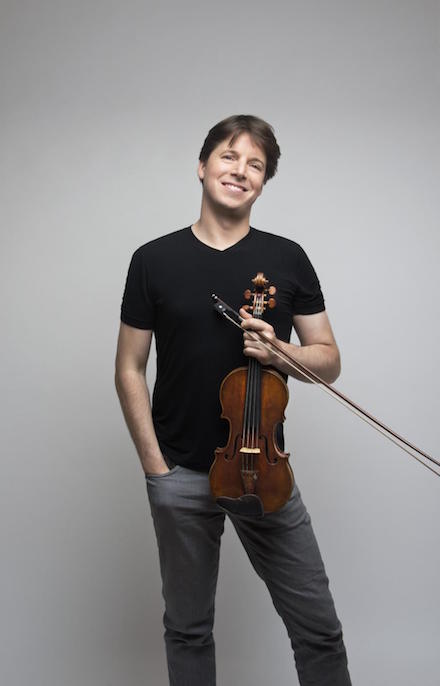(LENOX, Mass.) – Violinist Joshua Bell will appear with the Boston Symphony Orchestra as soloist in Saint-Saëns’s romantic Violin Concerto No. 3 at Opening Night at Tanglewood in a program featuring music by Ravel, Saint-Saëns, and Prokofiev, led by Canadian conductor Jacques Lacombe, on Friday, July 8, at 8pm.
Lacombe opens the program with Ravel’s raucous and colorfully Spanish-flavored Alborada del gracioso, and closes it with Prokofiev’s popular Symphony No. 5, a work composed in just one month in 1944 and given its American premiere in 1945 by Serge Koussevitzky and the BSO.
Joshua Bell made his debut with the Boston Symphony Orchestra at Tanglewood in 1989 at age 21, and has returned to the festival every summer since. Jacques Lacombe made his BSO debut at Tanglewood during the 2014 season, and returns this summer for the third year in a row.
Jacques Lacombe and the Boston Symphony Orchestra open the July 8 program with Ravel’s Alborada del gracioso, a 1918 transcription for orchestra from a suite of solo piano works, Miroirs, written in 1905. Alborada del gracioso is a vigorous Spanish dance filled with fast, repeated notes and powerful accents that make this transcription an orchestral showpiece.
Joshua Bell joins Lacombe and the orchestra for the centerpiece of the Opening Night program, Saint-Saens’s Violin Concerto No. 3. The most popular of his three concertos for violin, the Third Violin Concerto was composed in 1880, in the middle of the twenty-year span that saw the creation of most of Saint-Saens’s most popular and successful works.
The program closes with Prokofiev’s Fifth Symphony, separated from the composer’s previous four symphonies by 14 years and a large measure of musical maturity, demonstrating the composer’s complete mastery of the symphonic form and the height of his personal style. It was composed over the course of just a single month in 1944.
Prokofiev wrote upon its completion that the symphony was intended to “sing the praises of the free and happy man — his strength, his generosity and the purity of his soul,” a poignant and somewhat ironic subject for a composer working in Soviet Russia toward the end of World War II.
The work was given its American premiere in November 1945 by the BSO and Serge Koussevitzky.

